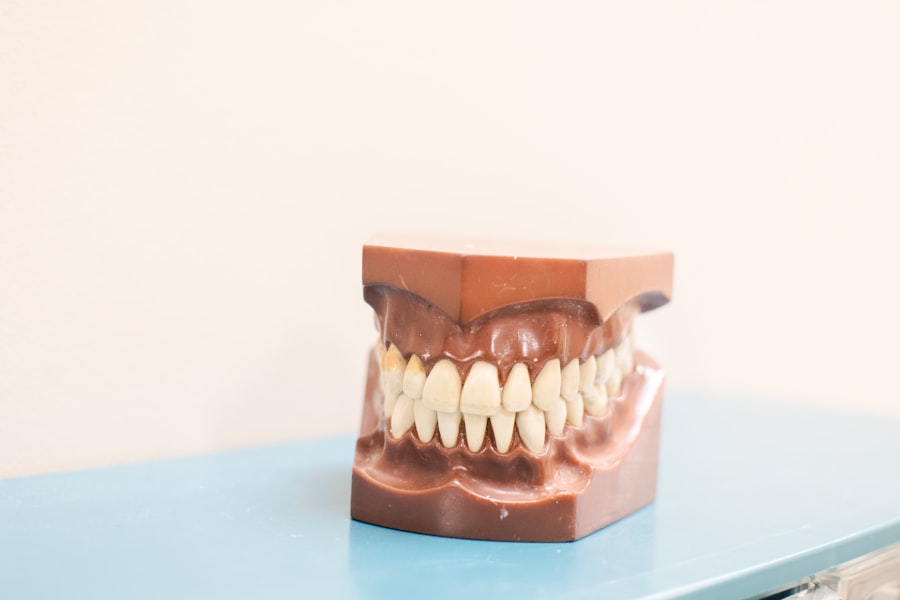Orthodontic services encompass a specialized branch of dentistry focused on diagnosing, preventing, and treating dental and facial irregularities. These services primarily aim to correct misaligned teeth and jaws, which can lead to various functional and aesthetic issues. Orthodontists utilize a range of tools and techniques, including braces, aligners, and retainers, to achieve optimal alignment of the teeth and jaw.
The field has evolved significantly over the years, incorporating advanced technology such as 3D imaging and computer-aided design to enhance treatment precision and patient comfort. The importance of orthodontic services extends beyond mere aesthetics. Misaligned teeth can contribute to a host of dental problems, including tooth decay, gum disease, and even jaw pain.
By addressing these issues early on, orthodontic treatment can help prevent more severe complications down the line. Furthermore, the psychological impact of having a straight smile cannot be understated; many individuals experience increased self-esteem and confidence after undergoing orthodontic treatment. Thus, understanding the breadth of orthodontic services is crucial for anyone considering improving their dental health and appearance.
Key Takeaways
- Orthodontic services improve dental alignment and overall oral health.
- Selecting a qualified orthodontist is crucial for effective treatment outcomes.
- A perfect smile boosts confidence and contributes to social and professional success.
- Common treatments include braces, aligners, and retainers tailored to individual needs.
- Maintaining results requires consistent care and follow-up after orthodontic procedures.
Choosing the Right Orthodontist for You
Selecting the right orthodontist is a critical step in your journey toward achieving a perfect smile. The process begins with researching potential candidates in your area. Look for orthodontists who are board-certified and have a solid reputation within the community.
Online reviews and testimonials can provide valuable insights into the experiences of previous patients. Additionally, consider seeking recommendations from your general dentist or friends who have undergone orthodontic treatment; personal referrals often lead to trustworthy options. Once you have a shortlist of orthodontists, schedule consultations to assess their approach and compatibility with your needs.
During these visits, pay attention to how the orthodontist communicates with you and whether they take the time to explain treatment options thoroughly. A good orthodontist should not only possess technical expertise but also demonstrate empathy and understanding of your concerns. Ask about their experience with specific treatments that interest you, such as clear aligners or traditional braces, and inquire about the technology they use in their practice.
This will help ensure that you choose an orthodontist who aligns with your expectations and treatment goals.
The Importance of a Perfect Smile

A perfect smile is often seen as a reflection of good health and personal hygiene, making it an essential aspect of one’s overall appearance. In many cultures, a straight, white smile is associated with beauty, success, and confidence. This societal perception can significantly influence an individual’s self-esteem and social interactions.
People with well-aligned teeth often report feeling more confident in both personal and professional settings, which can lead to improved opportunities in various aspects of life. Beyond aesthetics, a perfect smile plays a crucial role in oral health. Misaligned teeth can create difficulties in maintaining proper oral hygiene, leading to plaque buildup and an increased risk of cavities and gum disease.
Furthermore, improper alignment can cause uneven wear on teeth, jaw pain, and even headaches due to strain on the jaw muscles. Therefore, investing in orthodontic services not only enhances one’s appearance but also contributes to long-term dental health.
Common Orthodontic Treatments and Procedures
| Treatment/Procedure | Description | Average Duration | Typical Age Range | Purpose |
|---|---|---|---|---|
| Traditional Metal Braces | Metal brackets and wires attached to teeth to gradually move them into alignment. | 18-24 months | 10-18 years | Correct misaligned teeth, bite issues, and crowding. |
| Ceramic Braces | Similar to metal braces but with tooth-colored or clear brackets for a less noticeable appearance. | 18-24 months | 12-18 years | Align teeth with a more aesthetic option. |
| Invisalign (Clear Aligners) | Series of clear, removable aligners that gradually shift teeth. | 12-18 months | Teenagers and adults | Correct mild to moderate alignment and spacing issues discreetly. |
| Lingual Braces | Braces placed on the inner side of teeth, hidden from view. | 18-30 months | Adults | Correct alignment while maintaining aesthetics. |
| Palatal Expander | Device used to widen the upper jaw to correct crossbites and create space. | 3-6 months | 6-14 years | Expand upper jaw to improve bite and alignment. |
| Retainers | Custom devices worn after braces to maintain teeth position. | Varies (often lifelong part-time use) | All ages post-treatment | Prevent teeth from shifting after orthodontic treatment. |
| Orthognathic Surgery | Surgical procedure to correct severe jaw discrepancies. | Recovery 6 weeks to months | Late teens to adults | Correct jaw alignment and improve function and aesthetics. |
Orthodontic treatments vary widely based on individual needs and preferences. Traditional metal braces remain one of the most common methods for correcting misalignment. These braces consist of brackets attached to each tooth, connected by wires that gradually shift the teeth into their desired positions.
While they are highly effective for complex cases, advancements in orthodontics have introduced alternative options that cater to different lifestyles. Clear aligners, such as Invisalign, have gained popularity due to their discreet appearance and removable nature. These custom-made plastic trays gradually move teeth into alignment without the need for metal brackets or wires.
Patients appreciate the flexibility of being able to remove aligners during meals or while brushing their teeth, making it easier to maintain oral hygiene throughout treatment. Other options include lingual braces, which are placed on the back of the teeth for a more hidden approach, and ceramic braces that blend with the natural color of teeth for a less noticeable look.
Benefits of Orthodontic Services
The benefits of orthodontic services extend far beyond achieving a beautiful smile. One of the most significant advantages is improved oral health. By correcting misalignment issues, patients can better maintain their dental hygiene routines, reducing the risk of cavities and gum disease.
Properly aligned teeth also contribute to better chewing function, which can enhance digestion and overall health. Moreover, orthodontic treatment can lead to significant psychological benefits. Many individuals experience a boost in self-confidence after completing their treatment, which can positively impact their social interactions and professional opportunities.
Studies have shown that people with straight teeth are often perceived as more attractive and successful, which can influence first impressions in various settings. Additionally, addressing functional issues related to misalignment can alleviate discomfort or pain associated with jaw strain or uneven wear on teeth.
Maintaining Your Perfect Smile

Achieving a perfect smile through orthodontic treatment is just the beginning; maintaining that smile requires ongoing care and attention. After completing treatment with braces or aligners, patients are typically provided with retainers to help keep teeth in their new positions. It is crucial to wear these retainers as prescribed by the orthodontist to prevent teeth from shifting back to their original alignment.
In addition to wearing retainers, maintaining good oral hygiene practices is essential for preserving your smile. Regular brushing and flossing should be complemented by routine dental check-ups to monitor oral health. Patients should also be mindful of dietary choices; avoiding hard or sticky foods can help protect both natural teeth and orthodontic appliances from damage.
By committing to these practices, individuals can enjoy the benefits of their orthodontic treatment for years to come.
Orthodontic Services for All Ages
Orthodontic services are not limited to children or teenagers; adults increasingly seek treatment to improve their smiles at any stage of life. In fact, many orthodontists report seeing a growing number of adult patients who wish to address long-standing dental issues or enhance their appearance for personal or professional reasons. The availability of discreet options like clear aligners has made it easier for adults to pursue treatment without feeling self-conscious during the process.
For children, early intervention can be particularly beneficial in preventing more severe alignment issues later on. The American Association of Orthodontists recommends that children have their first orthodontic evaluation by age seven. Early assessments allow orthodontists to identify potential problems and develop a proactive treatment plan that may include interceptive measures such as space maintainers or partial braces.
By addressing these issues early, parents can help set their children up for successful outcomes as they grow.
Finding Affordable Orthodontic Services
The cost of orthodontic services can be a significant concern for many individuals considering treatment. However, there are various strategies to make these services more affordable without compromising quality care. First and foremost, it is essential to check if your dental insurance plan covers orthodontic treatment; many plans offer partial coverage for braces or aligners.
Additionally, many orthodontic practices provide flexible payment plans that allow patients to spread out the cost over time rather than paying a lump sum upfront. Some offices may also offer discounts for upfront payments or referrals from existing patients. Exploring financing options through third-party providers can also be beneficial; these companies specialize in offering loans specifically for dental care.
Moreover, community health centers or dental schools may offer reduced-cost orthodontic services performed by supervised students as part of their training programs. While these options may require more time due to longer appointment schedules or limited availability, they can provide high-quality care at a fraction of the cost. In conclusion, understanding the various aspects of orthodontic services—from choosing the right provider to maintaining your smile—can empower individuals to make informed decisions about their dental health journey.
With advancements in technology and an increasing awareness of the importance of oral health, achieving that perfect smile is more accessible than ever before.


